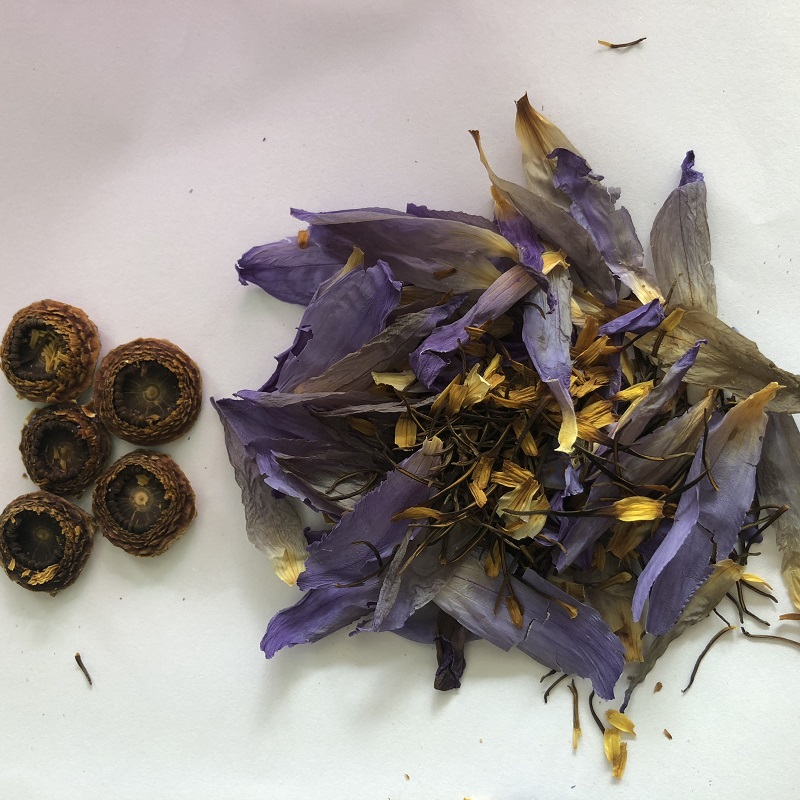
The blue lotus, scientifically known as Nymphaea nouchali, is a type of water lily that holds significant cultural and spiritual value, particularly in ancient Egyptian and Hindu cultures. Unlike the more commonly seen pink or white lotus, the blue lotus boasts a unique shade of blue or violet that makes it stand out among other aquatic flowers. Here are some key characteristics and features of the blue lotus:
Botodily Description:
The blue lotus has large, floating leaves with a notched or wavy margin that provide a distinctive appearance.
Its flowers are cup-shaped and can range in color from deep blue to light violet, sometimes with a reddish or greenish center.
The flower typically opens in the morning and closes in the afternoon, releasing a sweet fragrance during its blooming period.
The blue lotus grows in still or slow-moving water bodies, such as ponds and lakes, and prefers a warm climate.
Uses and Applications:
The blue lotus is cultivated for ornamental purposes and can be found in botanical gardens and private ponds around the world.
In some cultures, the blue lotus is used in herbal medicine to treat various conditions, though scientific evidence to support these uses is limited.
The petals and other parts of the flower are sometimes used in culinary applications, such as adding flavor and color to drinks and desserts.
Practical Uses
Herbal Tea: Dried blue lotus flowers can be steeped in hot water to make a tea, which is believed to have calming and relaxing effects.
Natural Dyes: The rich color of the dried petals can be used to create natural dyes for fabrics or other materials.
Ayurvedic Medicine: In Ayurvedic medicine, dried blue lotus is used in various remedies, though its efficacy is primarily based on traditional use rather than clinical evidence.







